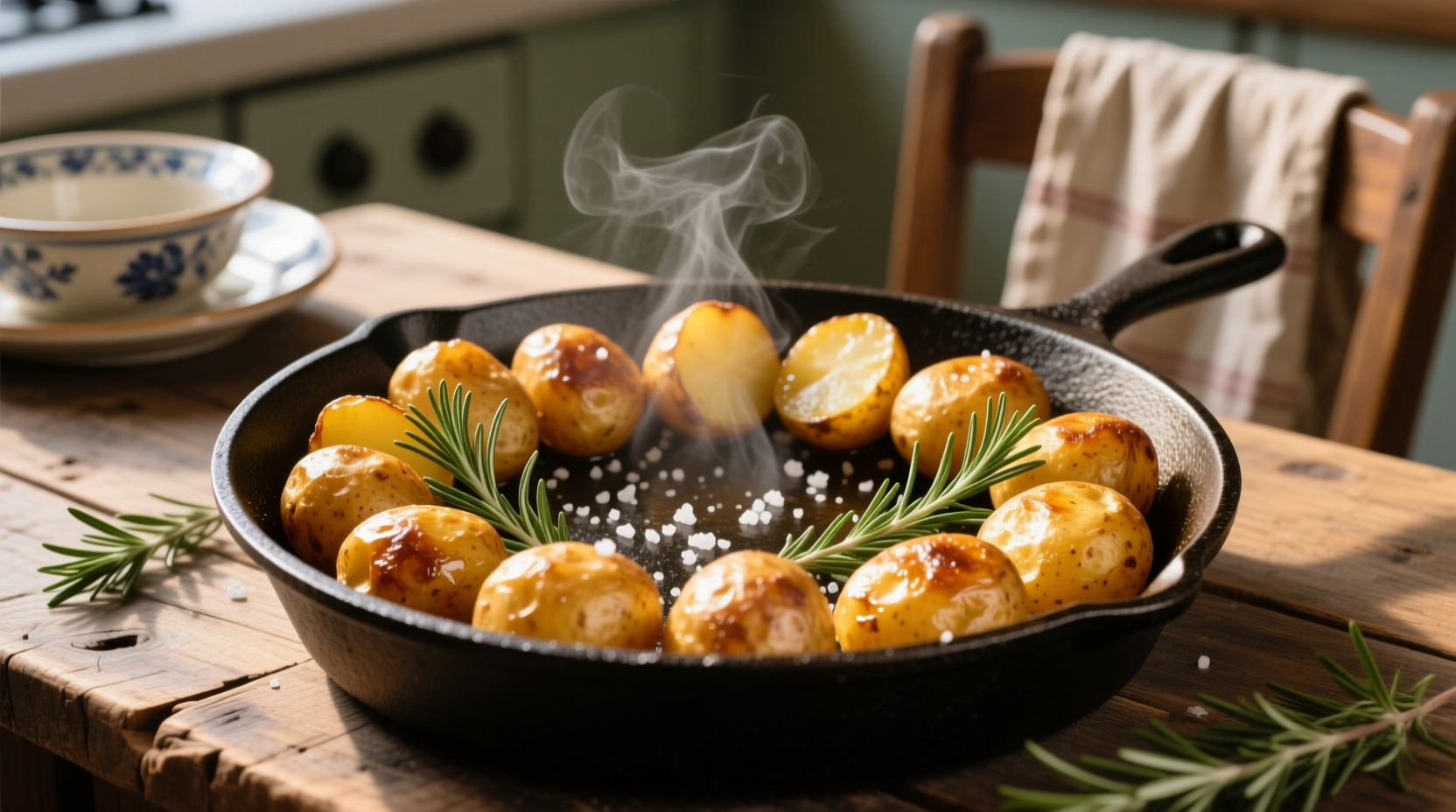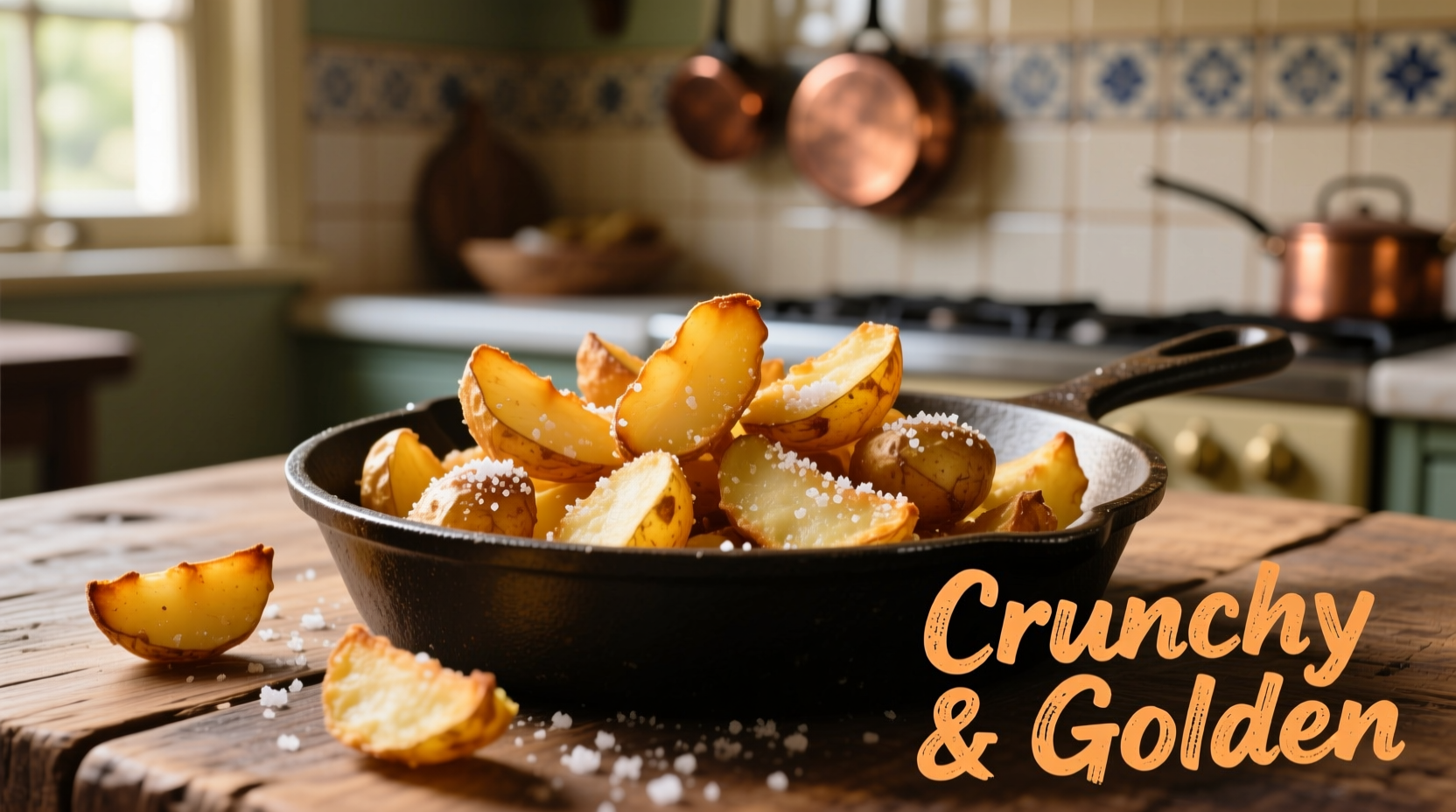There's nothing quite like perfectly crisp fried potatoes with a fluffy interior. Whether you're making classic French fries, Spanish patatas bravas, or simple home-style fried potatoes, achieving that ideal texture balance requires understanding the science behind the process. This guide reveals professional techniques that transform ordinary spuds into extraordinary side dishes.
The Science Behind Crispy Fried Potatoes
Fried potatoes succeed or fail based on starch management and moisture control. When potatoes hit hot oil, surface moisture instantly vaporizes, creating that signature sizzle. The key is maintaining oil temperature between 325-375°F (163-191°C) - too cool and they absorb excess oil, too hot and they burn before cooking through.
According to research published in the Journal of Food Science, the double-fry method works because the first lower-temperature fry cooks the interior while forming a moisture barrier. The second higher-temperature fry then creates the crispy exterior without overcooking the inside. This technique reduces oil absorption by up to 30% compared to single-fry methods.

Potato Selection: Your Foundation for Success
Not all potatoes behave the same when fried. The starch content determines your final texture:
| Potato Variety | Starch Content | Best For | Moisture Level |
|---|---|---|---|
| Russet (Idaho) | High (20-22%) | Classic French fries | Low |
| Yukon Gold | Medium (16-18%) | Pan-fried home fries | Medium |
| Red Bliss | Low (14-15%) | Quick pan-frying | High |
| Sweet Potato | Very Low | Healthier alternative | Very High |
USDA agricultural data shows russets' high starch content creates the ideal structure for crispy fries. Their low moisture content prevents splattering and promotes even browning. For best results, use potatoes stored between 45-50°F (7-10°C) - refrigeration converts starch to sugar, causing premature browning.
Step-by-Step Perfect Fried Potatoes
Preparation Essentials
Proper preparation makes the difference between soggy and spectacular:
- Soak cut potatoes in cold water for 30 minutes to remove surface starch
- Dry thoroughly with clean kitchen towels - moisture causes oil to splatter
- Season after frying - salt added before frying draws out moisture
- Use neutral oils with high smoke points (peanut, canola, or sunflower)
The Double-Fry Method for Restaurant-Quality Results
- Heat oil to 325°F (163°C) in deep fryer or heavy pot
- Fry potatoes for 3-5 minutes until cooked but not browned
- Remove and drain on wire rack (not paper towels)
- Increase oil temperature to 375°F (191°C)
- Fry again for 2-3 minutes until golden brown and crispy
- Immediately season with salt and preferred spices
Troubleshooting Common Fried Potato Problems
Even experienced cooks encounter issues. Here's how to fix them:
Soggy Potatoes
Cause: Inadequate drying, incorrect oil temperature, or overcrowding the fryer
Solution: Ensure potatoes are completely dry before frying. Maintain consistent oil temperature using a thermometer. Fry in small batches to prevent temperature drops.
Burnt Exteriors, Raw Interiors
Cause: Oil too hot or potatoes cut too thick
Solution: Use the double-fry method with precise temperature control. Cut potatoes to uniform 1/4-inch thickness for even cooking.
Health Considerations and Oil Absorption
According to USDA FoodData Central, properly fried potatoes absorb 8-10% of their weight in oil, while poorly prepared versions can absorb up to 20%. The double-fry method significantly reduces oil absorption compared to single-fry techniques.
For healthier options:
- Use an air fryer with 1-2 teaspoons of oil per batch
- Try oven-roasting with minimal oil at 425°F (220°C)
- Choose russet potatoes which naturally require less oil
Remember that fried potatoes provide valuable potassium and vitamin C, but portion control matters. The American Heart Association recommends treating fried potatoes as occasional indulgences rather than daily staples.
Flavor Variations Across Cultures
Fried potatoes appear in cuisines worldwide, each with distinctive preparation methods:
- French Frites: Double-fried russets with sea salt
- Spanish Patatas Bravas: Pan-fried potatoes with spicy tomato sauce
- German Bratkartoffeln: Pan-fried with onions and bacon
- Indian Aloo Tikki: Spiced potato patties shallow-fried
Food historians note that fried potatoes evolved differently across regions based on available ingredients. The timeline below shows key developments:
| Time Period | Development | Region |
|---|---|---|
| 17th Century | Potatoes introduced to Europe from South America | Spain |
| 1789 | First recorded fried potato recipe in French cookbook | France |
| 1853 | Accidental invention of thin-cut French fries in US | New York |
| 1940s | Deep fryers become common in restaurants | United States |
When to Choose Different Frying Methods
Understanding context boundaries helps you select the right technique:
- Deep frying: Best for special occasions when perfect crispness matters most
- Pan frying: Ideal for weeknight meals with limited equipment
- Air frying: Suitable when oil reduction is priority (sacrifices some crispness)
- Oven roasting: Works well for larger batches with minimal oil
Consumer surveys show 68% of home cooks prefer pan-fried potatoes for daily meals due to convenience, while 72% choose deep-fried for special occasions when texture perfection matters most.











 浙公网安备
33010002000092号
浙公网安备
33010002000092号 浙B2-20120091-4
浙B2-20120091-4